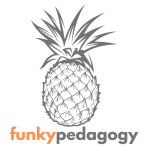I haven’t written a new original blog of my own in a while, and have been promising to write something on literacy for months. My role of late has become heavily focused on literacy, specifically reading, and I think my reluctance to blog about it has been rooted in the feeling that the work ahead is so enormous that I can’t quite capture it.
The challenge is huge. We know that around 16.4% of British adults are functionally illiterate (National Literacy Trust). That is, they have a reading age below 9 years and 6 months and would struggle to read and understand the information on a medicine bottle or the front page of a newspaper. At my school, located in a Northern, predominantly white working class community with a history of widespread unemployment and disadvantage, this figure is significantly higher. We have a lot of work to do. Our reading strategy is a broad and complex one, ranging from diagnostic assessment and intensive intervention, all the way to extra-curricular programmes and refurbishing the library. We are going big.
English Curricular Reading Programme
Our literacy strategy is too complex to usefully summarise in one post, and some things are very much in their infancy, but one strand which might be useful to others in my position is our English curricular reading programme. We used to have Accelerated Reader in place, but for a number of reasons chose to go with something which was bespoke to our school. We have planned a reading programme which uses one hour per week of English curriculum time and is delivered by the English department. It is a bookletised curriculum for Y7-9, and it looks like this…
- Each lesson has a quality text which has been chosen because it meets our key criteria: literary value; broad range of voices; range of forms and genres; explores key issues in our academy character journey (pastoral personal development links); appropriate level of challenge for the year group; compliments and enhances our English academic curriculum.
- The texts and activities in the programme are all in a bespoke designed booklet for that year group. We have a bookletised curriculum at our school and have developed a house-style with which the reading programme is aligned.
Reading lesson structure
- One page of initial questions designed to activate pre-requisite knowledge. Students answer the questions, and the teacher uses these as a starting point for a discussion about the upcoming text. Questions are designed to contextualise the text, and ensure that students have the baseline understanding they need in order to access what is coming in a meaningful way.
- The text. It is 1.5 spaced and has a wide margin so that students have space for annotations where appropriate. The teacher reads the text out loud and students follow along using a ruler or other straight edge. The teacher might stop every now and then to talk about elements of the text, but they also might read to the end and go back to discuss afterwards – this is down to their own judgement of what students need.
- Students summarise the text in their own words. Summary is a powerful tool.
- Students complete literacy based activities following the text. This will always start with a close-up analysis of a word from the text, exploring etymology and morphology, led by the teacher. Some of the activities will be linked to vocabulary, some to sentence and grammar, some to overall structure and some to wider issues. The activities are inspired by the text in question.
- Students have a second text as 30 minutes of reading homework. The text is liked to the first one, either something else by the same writer, or something with similar themes, form or structure. They read the second text and answer some comprehension questions which they then bring to their next reading lesson.




You can find one of the booklets here – this one is for Y8 and was made by one of my colleagues (shared with permission). Please feel free to use this and adapt it for your own setting.

